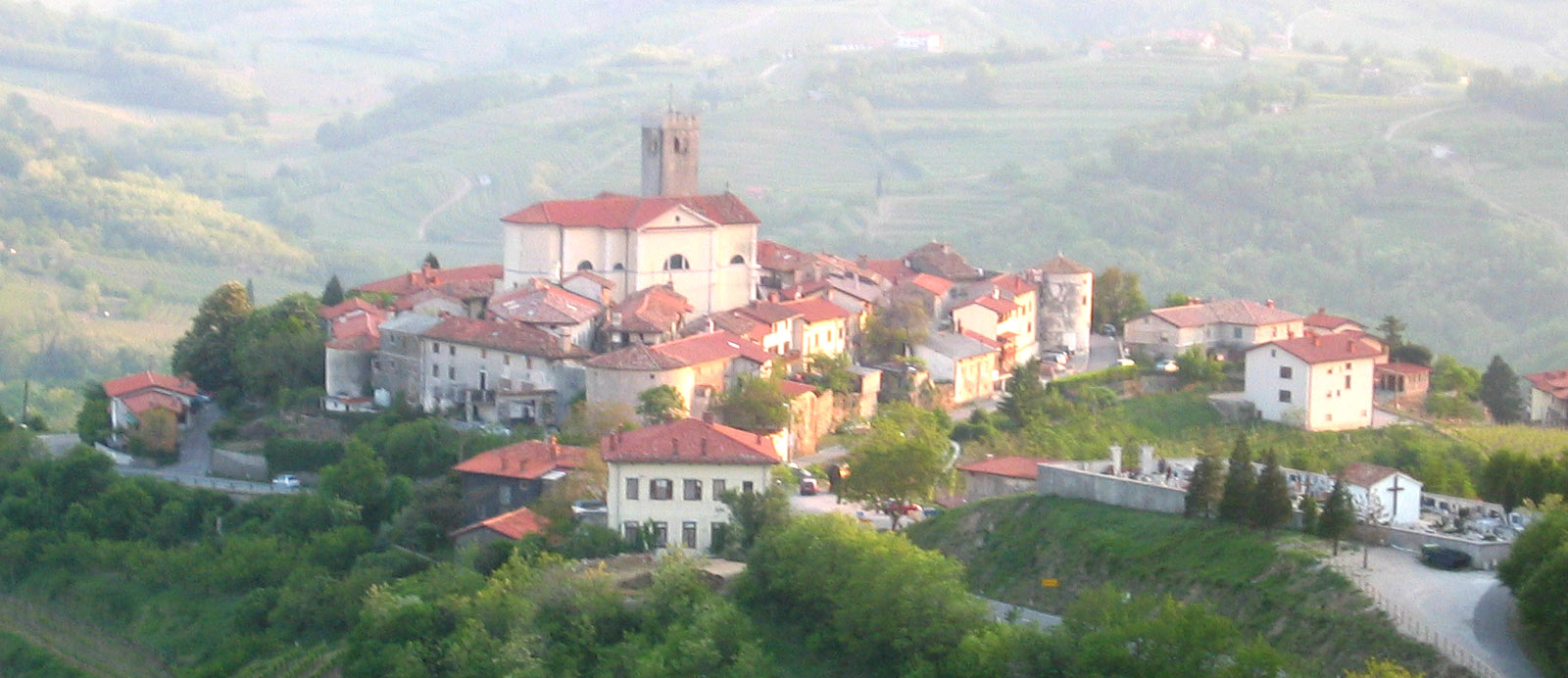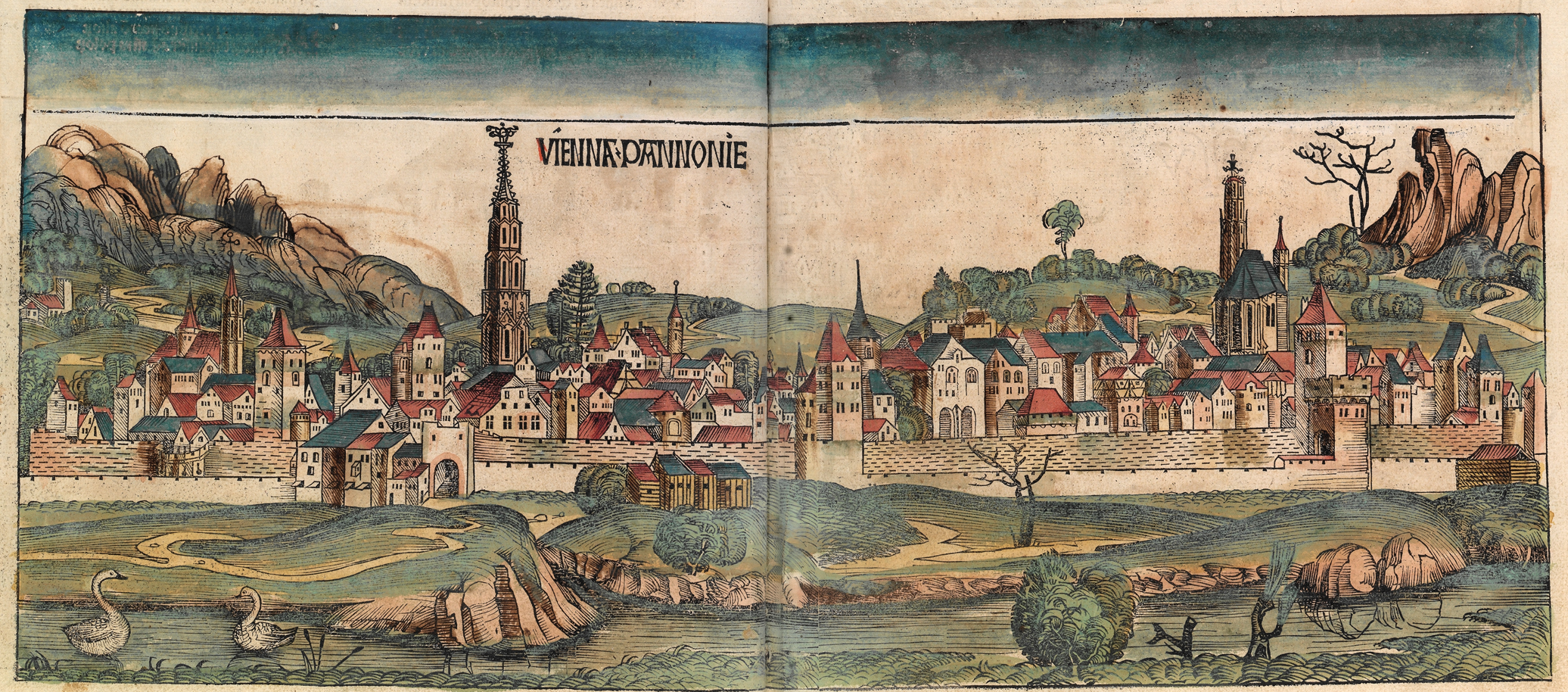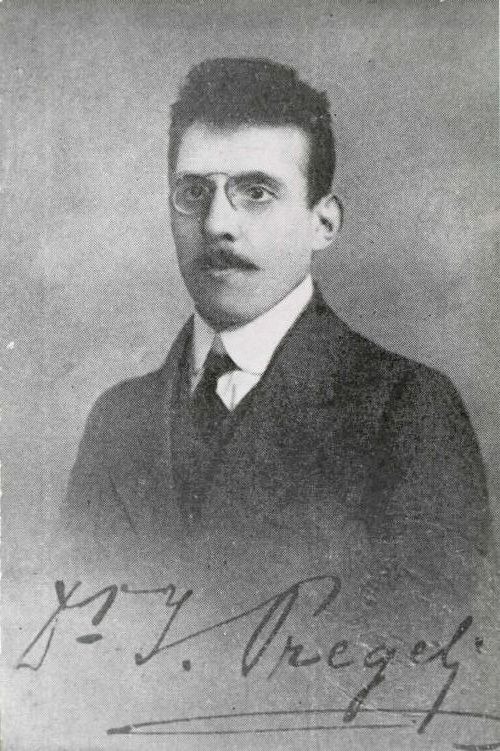|
Alojz Gradnik
Alojz Gradnik (August 3, 1882 – July 14, 1967) was a Slovenian poet and translation, translator. Life Gradnik was born in the village of Medana in the Gorizia Hills region, in what was then the Austro-Hungarian Empire and is today in the Municipality of Brda of Slovenia. His father was a Slovenes, Slovene from Trieste who came from a poor working-class background, but created considerable wealth by winemaking. His mother was an Friuli, ethnic Friulian from the County of Gorizia and Gradisca. His younger brother Jožef later served as mayor of the village. Gradnik attended the multilingual Gymnasium (school), State Gymnasium in Gorizia. He lived in a student home run by the Catholic Church. Among his friends from this period were Avgust Žigon, who later became a renowned literary scholar, the Slovene writer Ivan Pregelj and the Friulian prelate Luigi Fogar, who later served as bishop of Trieste. After finishing high school, he went to study law in Vienna. After graduation in 1 ... [...More Info...] [...Related Items...] OR: [Wikipedia] [Google] [Baidu] |
Medana
Medana () is a village in the Municipality of Brda in the Slovene Littoral region of Slovenia. It is located in the Gorizia Hills (Slovene: ''Goriška brda''), a wine-producing region on the border with Italy. The parish church in the village is dedicated to the Assumption of Mary and belongs to the Diocese of Koper. Medana is the birthplace of the Slovene Alojz Gradnik
Alojz Gradnik (August 3, 1882 – July 14, 1967) was a Slovenian poet and translation, translator.
Life
Gradnik was born in the village of Medana in the Gorizia Hills region, in wh ...
[...More Info...] [...Related Items...] OR: [Wikipedia] [Google] [Baidu] |
County Of Gorizia And Gradisca
The Princely County of Gorizia and Gradisca (; ; ), historically sometimes shortened to and spelled "Goritz", was a crown land of the Habsburg dynasty within the Austrian Littoral on the Adriatic Sea, in what is now a multilingual border area of Italy and Slovenia. It was named for its two major urban centers, Gorizia and Gradisca d'Isonzo. Geography The province stretched along the Soča/Isonzo River, from its source at Mt. Jalovec in the Julian Alps down to the Gulf of Trieste near Monfalcone. In the northwest, the Predil Pass led to the Duchy of Carinthia, in the northeast Mts. Mangart, Razor and Triglav marked the border with the Duchy of Carniola (Upper Carniola). In the west, Mts. Kanin and Matajur stood on the border with the Friulian region, which until the 1797 Treaty of Campo Formio was part of the Republic of Venice, from 1815 onwards belonged to the Austrian Kingdom of Lombardy–Venetia and finally to the newly established Kingdom of Italy from 1866. In the s ... [...More Info...] [...Related Items...] OR: [Wikipedia] [Google] [Baidu] |
National Progressive Party (Slovenia)
The National Progressive Party () was a political party in the Carniola region of Austria-Hungary. It was established in 1894 by Ivan Tavčar as the ''National Party of Carniola'' (); it was renamed ''The National Progressive Party'' in 1905. It continued to operate under this name until after the First World War, when it merged with the National Party of Styria () into the Yugoslav Democratic Party The Yugoslav Democratic Party, ''State Party of Serbian, Croatian and Slovene Democrats'' and Democratic Party, also known as the Democratic Union was the name of a series of liberal political parties that existed in succession in the State of S ..., only to be incorporated into the pan- Yugoslav State Party of Serbian, Croatian and Slovene Democrats () less than a year later. The National Progressive Party adopted a liberal nationalist political stance and had a clear majority in the municipal council of Ljubljana-Laibach during the 1880s. References Political parties in Au ... [...More Info...] [...Related Items...] OR: [Wikipedia] [Google] [Baidu] |
Andrej Gabršček
Andrej is the form of the given name Andrew used in Slovak, Croatian and Slovene. Notable individuals with the given name Andrej *Andrej Babiš (born 1954), Czech politician *Andrej Bajuk (1943–2011), Slovene politician and economist *Andrej Čadež (born 1942), Slovene physicist and astrophysicist *Andrej Karpathy (born 1986), Slovak-Canadian computer scientist *Andrej Kiska (born 1963), Slovak politician and businessman *Andrej Kramarić (born 1991), Croatian football player *Andrej Meszároš (born 1985), Slovak ice hockey player *Andrej Plenković (born 1970), Croatian politician *Andrej Pohar (born 1974), Slovenian badminton player *Andrej Sekera Andrej Sekera (born 8 June 1986) is a Slovak former professional ice hockey defenceman. He played for the Buffalo Sabres, Carolina Hurricanes, Los Angeles Kings, Edmonton Oilers and Dallas Stars of the National Hockey League (NHL). Born and rai ... (born 1986), Slovak hockey player * Andrej Stančík (born 1995), Slovak poli ... [...More Info...] [...Related Items...] OR: [Wikipedia] [Google] [Baidu] |
National Liberalism
National liberalism is a variant of liberalism, combining liberal policies and issues with elements of nationalism. Historically, national liberalism has also been used in the same meaning as conservative liberalism (right-liberalism). A series of "national-liberal" political parties, by ideology or just by name, were especially active in Europe in the 19th century in several national contexts such as Central Europe, the Nordic countries, and Southeastern Europe. Definitions National liberalism was primarily a 19th-century ideology and a movement. National liberal goals were the pursuit of individual and economic freedom and national sovereignty. József Antall, a historian and Christian democrat who served as the first post-communist Prime Minister of Hungary, described national liberalism as "part and parcel of the emergence of the nation state" in 19th-century Europe. According to Oskar Mulej, "in terms of both ideologies and political party traditions it may be argu ... [...More Info...] [...Related Items...] OR: [Wikipedia] [Google] [Baidu] |
Austrian Littoral
The Austrian Littoral (, , , , ) was a crown land (''Kronland'') of the Austrian Empire, established in 1849. It consisted of three regions: the Margraviate of Istria in the south, Gorizia and Gradisca in the north, and the Imperial Free City of Trieste in the middle. The region has been contested frequently, with parts of it controlled at various times by the Republic of Venice, Austria-Hungary, Italy, and Yugoslavia among others. The Kingdom of Italy annexed most of the area after World War I according to the Treaty of London and later the Treaty of Rapallo. After World War II it was split, with Italy in the west and Yugoslavia in the east. Trieste had strategic importance as Austria-Hungary's primary seaport, and the coast of the Littoral was a resort destination known as the Austrian Riviera. The region was a multi-ethnic one, with Italians, Slovenes, Croats, Germans and Friulians being the main groups. In 1910, it had an area of and a population of 894,287. History ... [...More Info...] [...Related Items...] OR: [Wikipedia] [Google] [Baidu] |
Pula
Pula, also known as Pola, is the largest city in Istria County, west Croatia, and the List of cities and towns in Croatia, seventh-largest city in the country, situated at the southern tip of the Istria, Istrian peninsula in western Croatia, with a population of 52,220 in 2021. It is known for its multitude of ancient Roman Empire, Roman buildings, the most famous of which is the Pula Arena, one of the best preserved Roman amphitheaters. The city has a long tradition of wine making, fishing, shipbuilding, and tourism. It was the administrative centre of Istria from ancient Rome, ancient Roman times until superseded by Pazin in 1991. History Pre-history Evidence of the presence of ''Homo erectus'' one million years ago has been found in the cave of Šandalja near Pula. Pottery from the Neolithic period (6000–2000 BC), indicating Colonization, human settlement, has been found around Pula. In the Bronze Age (1800–1000 BC), a new type of settlement appeared in Istria, called ... [...More Info...] [...Related Items...] OR: [Wikipedia] [Google] [Baidu] |
Istria
Istria ( ; Croatian language, Croatian and Slovene language, Slovene: ; Italian language, Italian and Venetian language, Venetian: ; ; Istro-Romanian language, Istro-Romanian: ; ; ) is the largest peninsula within the Adriatic Sea. Located at the top of the Adriatic between the Gulf of Trieste and the Kvarner Gulf, the peninsula is shared by three countries: Croatia, Slovenia, and Italy,Marcel Cornis-Pope, John Neubauer''History of the literary cultures of East-Central Europe: junctures and disjunctures in the 19th And 20th Centuries'' John Benjamins Publishing Co. (2006), Alan John Day, Roger East, Richard Thomas''A political and economic dictionary of Eastern Europe'' Routledge, 1sr ed. (2002), 90% of its area being part of Croatia. Most of Croatian Istria is part of Istria County. Geography The geographical features of Istria include the Učka/Monte Maggiore mountain range, which is the highest portion of the Ćićarija/Cicceria mountain range; the rivers Dragonja/Dragogna, ... [...More Info...] [...Related Items...] OR: [Wikipedia] [Google] [Baidu] |
Vienna
Vienna ( ; ; ) is the capital city, capital, List of largest cities in Austria, most populous city, and one of Federal states of Austria, nine federal states of Austria. It is Austria's primate city, with just over two million inhabitants. Its larger metropolitan area has a population of nearly 2.9 million, representing nearly one-third of the country's population. Vienna is the Culture of Austria, cultural, Economy of Austria, economic, and Politics of Austria, political center of the country, the List of cities in the European Union by population within city limits, fifth-largest city by population in the European Union, and the most-populous of the List of cities and towns on the river Danube, cities on the river Danube. The city lies on the eastern edge of the Vienna Woods (''Wienerwald''), the northeasternmost foothills of the Alps, that separate Vienna from the more western parts of Austria, at the transition to the Pannonian Basin. It sits on the Danube, and is ... [...More Info...] [...Related Items...] OR: [Wikipedia] [Google] [Baidu] |
Bishop Of Trieste
The Diocese of Trieste () is a Latin diocese of the Catholic Church in the Triveneto. It has existed since no later than 524, and in its current form since 1977. The bishop's seat is in the Cathedral Basilica of Saint Justus Martyr. It is a suffragan of the Archdiocese of Gorizia. ... with the Papacy. On 20 June 1828, by the papal bull "Locum Beati Petri", Pope Leo XII completed the project which had been begun by Pius VII, the reorganization of the dioceses of the Italian peninsula, Istria, and Dalmatia, whose existence had been interrupted or compromised by the French intrusions. He first suppressed a number of dioceses in Istria and Dalmatia, including Aemonia. The diocese of Koper, or Capodistria-Koper, was united with Trieste. Thereafter it was known as the "Diocese of Trieste-Koper (Capodistria)". Bishop Bartholomew Legat was present at the Synod of Vienna in April 1849, when the Austrian Episcopal Conference was founded. He also defended the views of the minority in the F ... [...More Info...] [...Related Items...] OR: [Wikipedia] [Google] [Baidu] |
Luigi Fogar
Luigi (; ) is a character created by Japanese video game designer Shigeru Miyamoto. Part of Nintendo's ''Mario'' franchise, he is a kind-hearted, cowardly Italian plumber, and the younger fraternal twin brother and sidekick of Mario. Like his brother, Luigi's distinctive characteristics include his large nose and mustache, overalls, green hat, and high-pitched, exaggerated Italian accent. Luigi first appeared in '' Mario Bros.'', a 1983 platform game, in which he was originally designed as a palette swap of Mario with a green color scheme; Luigi has since appeared in multiple games and other media throughout the ''Mario'' franchise, in which developed a personality and style of his own. As his role in the ''Mario'' franchise progressed, Luigi evolved into a physically distinct character, and become the main protagonist of ''Mario is Missing!'' and the ''Luigi's Mansion'' series. Charles Martinet voiced Luigi from 1992 to 2023, when he was succeeded by Kevin Afghani. Luigi ... [...More Info...] [...Related Items...] OR: [Wikipedia] [Google] [Baidu] |
Ivan Pregelj
Ivan Pregelj (27 October 1883 – 30 January 1960) was a Slovene writer, playwright, poet, and critic. Life Pregelj was born to a tailor's family in Most na Soči (at that time called Sveta Lucija). His father died while Pregelj was still a child. He attended school with the help of the parish priest. After graduating from high school, he started studying theology but soon abandoned this. He then went to Vienna, where he entered the programs in Slavic studies and German studies. He wrote his dissertation on the Capuchin sermon-writer Mihael Krammer (1667–1728). Pregelj taught as a secondary school instructor in Gorizia, Pazin, Idrija, Kranj, and Ljubljana. He intentionally stopped writing around age fifty. Pregelj died in Ljubljana on 30 January 1960. Works Pregelj primarily wrote poems, stories, and plays. He created an extensive body of literary criticism in the form of essays and translations of various works. His best-known works are the novel ''Tolminci'' (The People fr ... [...More Info...] [...Related Items...] OR: [Wikipedia] [Google] [Baidu] |




